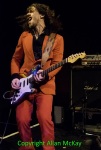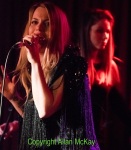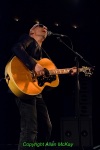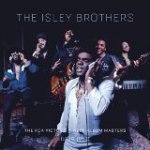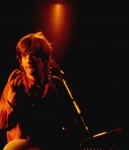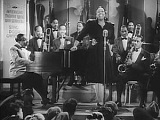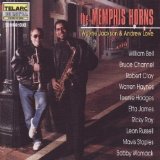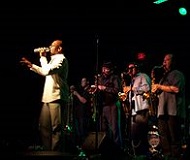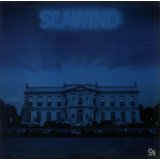Every year we seem have another ‘death of the album’ story as the established music business struggles to keep up with (or buy in to) services trying to maximise profit for the industry at the expense of the artist. But this year something strange has happened; sales of vinyl and record decks have risen dramatically. OK, the baseline’s still low but as CD sales plummet, it’s a good sign that people are investing in the hardware to play an analogue album format. Meanwhile, thousands of artists and bands are ignoring the established music business, funding their own recordings and using whatever methods they can to get their music out there. All of my High Five albums this year have been self-funded by artists who are making music because they believe in what they do and hoping that they can find an audience. I had seven albums on the shortlist for this selection, so there are a couple of honourable mentions as well.
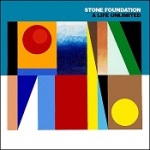 “A Life Unlimited” – Stone Foundation
“A Life Unlimited” – Stone Foundation
It’s been another good year for Stone Foundation. They’ve signed up to a couple of overseas labels, toured Japan again and released “A Life Unlimited”, an album that moves their search for the new soul vision onward and upward with hints of jazz, house and Latin disco (and even guest vocal performances from Graham Parker and Doctor Robert). Songwriters Neil Jones and Neil Sheasby have produced another set of classic songs while the band line-up has evolved with the permanent addition of congas and baritone sax replacing trombone in the horn section to give a slightly harder sound. This album (like its predecessor “To Find the Spirit”) is all about a group of musicians working together to create a very British soul sound; no egos, no big solos, just a bunch of guys pumping out perfect grooves. You can read the original review here.
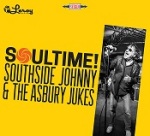 “Soultime!” – Southside Johnny and the Asbury Jukes
“Soultime!” – Southside Johnny and the Asbury Jukes
You have to admire someone who’s been singing for over forty years, come through some difficult times and still gets fired up about recording and performing songs. Since cutting his ties with the corporate music business, and setting up his own label around fifteen years ago, Southside Johnny has undergone a creative renaissance, becoming more involved in songwriting (with co-writer Jeff Kazee) and exploring new musical areas (including Americana with his second band The Poor Fools). “Soultime!” is the work of an artist who isn’t bound by a release schedule and a cycle of album and tour. This album is inspired by some of the soul and rhythm and blues greats of the sixties and seventies, and evokes the era joyously without ever becoming a pastiche. It’s an album that’s great fun to listen to and sounds like it was fun to make. It’s essential listening and you can read the original review here.
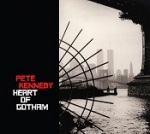 “Heart of Gotham” – Pete Kennedy
“Heart of Gotham” – Pete Kennedy
This is an album that had a long gestation period. Pete has been working on it for about ten years and there are a couple of reasons why the album took so long to make. Pete and Maura Kennedy have a very busy schedule with their other projects but, more importantly, this album could only be released when everything was absolutely perfect. “Heart of Gotham” is a song cycle about Pete’s love for New York City, delving into the city’s history, geography and ambience against a backdrop of Pete’s outstanding musicianship (playing all the instruments on the album) and some beautifully-realised arrangements. Pete’s multi-layered guitars and gravelly vocal delivery create an atmosphere that’s unlike anything else I’ve heard this year. You can read the original review here and you should also read Pete’s contribution to this year’s High Fives, which links in to the album.
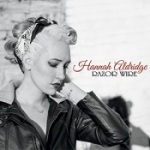 “Razor Wire” – Hannah Aldridge
“Razor Wire” – Hannah Aldridge
This was a debut album with instant impact. Hannah puts together all of the classic singer-songwriter elements perfectly; she has a powerful, clear voice and she sings intensely personal songs with conviction and emotion. Everything on the album is inspired by life events, apart from “Parchman”, the story of a woman on death row, who has no regrets about the crime which put her there. There are songs about jealousy, revenge, addiction and inappropriate relationships, but there’s also a counterbalance, particularly with the nostalgia of “Black and White”. The album visits some very dark places but there are enough positive moments to create balance between the dark and the light. Hannah’s always been inspired by Jackson Browne; I’m sure he’d be pleased to hear the fruits of his influence. You can read a live review from Hannah’s Green Note gig in July here.
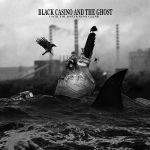 “Until the Water Runs Clear” – Black Casino and the Ghost
“Until the Water Runs Clear” – Black Casino and the Ghost
Black Casino and the Ghost (can we just say BCATG from now on) are a four-piece based in London and Essex and “Until the Water Runs Clear” is their second album. They’ve been Riot Squad favourites since their first album was released over two years ago. It would be easy to focus on the stupendous voice of singer Elisa Zoot and the guitar virtuosity of Ariel Lerner, but bass player Gary Kilminster and drummer Paul Winter-Hart play their part as well, with Elisa’s keyboards adding even more possibilities. “Until the Water Runs Clear” has drawn in many influences from sixties pop to trip-hop, mutated them and thrown them in the blender to create something that alternately sounds familiar and completely original. There’s also a lyrical dark side that runs through the album, creating sinister undertones and a hint of paranoia; maybe you shouldn’t skin up before listening to this one. The end result is an album which keeps you guessing; you’re never quite sure where it’s going, but you don’t want to miss a second of it. You can read the review here and see a few photos of the band at The Finsbury here.
And there are a couple of honourable mentions for the Dean Owens album “Into the Sea”, which was recorded in Nashville and packed with memorable and very personal tunes, and Bob Malone’s “Mojo Deluxe” featuring some keyboard virtuosity and a bunch of great tunes across a wide range of musical styles.
So how about five great gigs this year? Well, I’ve had plenty to choose from and I can’t say that I’ve seen a bad one, so it hasn’t been an easy choice to whittle it down to the top five (and no cheating this time either). These are all gigs that I walked away from feeling elated, feeling that I’d seen something special that I wanted to tell the world about. So I did, and here’s a reminder of how good these gigs were.
On a freezing February Friday night in Shoreditch, Rich Mix was a welcome respite from bars full of bankers and ‘exclusive’ lap-dancing joints. The venue is a social enterprise where the motivation isn’t purely profit and programming of events is always interesting. On this particular night, John Fairhurst, along with Pete Episcopo (bass) and Toby Murray (drums) played a raw and raucous set of blues focussing on the 2014 album “Saltwater”. Some of the album versions of the songs were fairly big production numbers but the live performance was strictly a power trio affair with John’s blistering guitar topping off the mixture. The journey back through Shoreditch didn’t seem quite so bad after a night of proper blues with electric guitars playing way up loud. You can see some photos from the gig here.
Mollie Marriott @The Half Moon
This one was firmly in the eagerly-anticipated category. Mollie’s been working quietly for some time putting together a great band for live and studio work featuring her Jim Stapley bandmates Izzy Chase-Phillmore, Sam Tanner and Johnson-Jay Medwik-Daley. After an interesting acoustic support set from her nephew, Mo Evans, Mollie’s full band made their first live appearance in a Half Moon packed with fans and a few well-known faces as well. It was obvious from the start that this isn’t just a bunch of hired hands; this is a bunch of really good mates as well. None of their playing is showy or attention-seeking; everything serves the songs and underpins Mollie’s phenomenal voice, and it all works perfectly. The audience were onside anyway, but Mollie and the band gave a great performance of material from the upcoming debut album and a couple of covers as well. Here are some photos of this one.
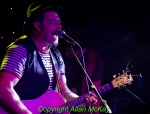 Mad Dog Mcrea and Sound of the Sirens @The Half Moon
Mad Dog Mcrea and Sound of the Sirens @The Half Moon
This was a very special gig. I’d been invited along to see Mad Dog Mcrea and I had no idea about the support on the night, Sound of the Sirens. It’s such a great feeling when you see an artist for the first time and you know instantly that they’re something special. And it’s not just me; apparently Chris Evans was quite impressed with them as well. Anyway, they played a storming set completely winning over the audience with their powerful songs, dynamics, and harmonies. If the night had stopped at that point, I would have been perfectly happy, but we still had Mad Dog Mcrea to come, with an energetic run through material from their album “Almost Home” plus a few old favourites and crowd pleasers. Two great bands with enough in common to appeal to the whole audience but with enough differences to create a very varied night. And there are some photos here.
 Squeeze and Dr John Cooper Clarke @Indigo2
Squeeze and Dr John Cooper Clarke @Indigo2
Another interesting double bill, this time with two very different artists, linked by the era which saw the start of their careers. John Cooper Clarke (now making the most of his honorary doctorate) has been doing poetry and comedy events for a few years but the tour with Squeeze put him back in front of big audiences filled with people who remembered him from the first time round. He throws more one-liners and gags into his routine now but a lot of the old favourite poems are still there, although some of them, particularly “Twat”, have evolved over time. On this night he was a barnstorming crowd-pleaser, building up the audience nicely for the headline act.
This year Squeeze had a new album to promote so the setlist was varied, to say the least, with material covering almost forty years from “Take Me I’m Yours” to new songs like “Cradle to the grave” with the usual smattering of different interpretations of Squeeze classics. What made this performance so special was the group of musicians (mainly Glenn Tilbrook’s Fluffers) now making up the rest of Squeeze who add upright bass, melodica and other esoteric instruments to the mix as well as adding rich vocal harmonies. Chris Difford and Glenn Tilbrook have never sounded better and what an incredible set of songs. Guess what, some photos here.
Graham Parker and Brinsley Schwarz & The Union Chapel
And finally. One of the greatest talents never to break through in the seventies and eighties, Graham Parker, who toured twice this year; once with The Rumour and once with Brinsley Schwarz. With a songbook which again covers almost forty years and a new album to promote as well, Graham Parker mixed up some established classics, some surprises and some new songs to delight an audience which might have been a little biased anyway. His voice is still remarkable and the songs are all strong enough to work in stripped-back arrangements. This wasn’t just a nostalgia thing; there were new songs to promote and they all sounded as good as anything he’s done before. He’s a remarkable man and it was a real pleasure to hear these songs in such a beautiful venue. How about a look at GP in the seventies and now?
In December 2014, I made a conscious decision that I would get to as many gigs as I possibly could during 2015. Not all of those gigs became reviews or picture galleries, but I certainly broke my previous record, which has stood since my second year at university. I love those moments at gigs when something happens which is either so unexpected or so exceptional that the hair stands up on the back of your neck and you know that you’ll remember it forever. Here are five of those from 2015:
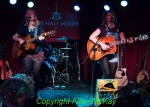 Sound of the Sirens – In mid-March this year I was at The Half Moon in Putney to see Mad Dog Mcrea. I’d just reviewed their “Almost Home” album and thought they would be good to see live. I hadn’t heard of the support band, Sound of the Sirens, but I like to see support bands because you never know when you’ll make a great discovery; this was one of those nights. Abbe Martin and Hannah Wood grabbed my attention from the opening notes with superb songs, perfect harmonies and counterpoint and a huge dynamic range combining to create a set of acoustic anthems for the twenty-first century, all of it completely new to me. The entire set was stunning, but “Faith in Fire” had me transfixed; I had to just stand and watch, open-mouthed as the song progressed from the quiet intro to a rousing finale. Just perfect.
Sound of the Sirens – In mid-March this year I was at The Half Moon in Putney to see Mad Dog Mcrea. I’d just reviewed their “Almost Home” album and thought they would be good to see live. I hadn’t heard of the support band, Sound of the Sirens, but I like to see support bands because you never know when you’ll make a great discovery; this was one of those nights. Abbe Martin and Hannah Wood grabbed my attention from the opening notes with superb songs, perfect harmonies and counterpoint and a huge dynamic range combining to create a set of acoustic anthems for the twenty-first century, all of it completely new to me. The entire set was stunning, but “Faith in Fire” had me transfixed; I had to just stand and watch, open-mouthed as the song progressed from the quiet intro to a rousing finale. Just perfect.
Graham Parker & Brinsley Schwarz at The Union Chapel – My first visit to the lovely Union Chapel and I was there with Phil Burdett to see one of my teenage heroes play a stripped-down set with Brinsley Schwarz (who was in the first proper band I saw live). Graham Parker has such a huge catalogue of songs that it’s impossible to predict which ones would make the cut on the night. Over the pre-gig pint, I came up with a small wish-list; one of which was almost a certainty, and the other a bit of an outsider. The opening song “Watch the Moon Come Down” ticked the certainty box, but it wasn’t until much later in the set that the harrowing “You Can’t be Too Strong” completed the list. The audience reaction of awed silence throughout the song and an explosion of applause at the end showed that I wasn’t the only person waiting to hear that one. I think I may have had something in my eye at that point.
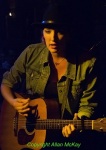 Hannah Aldridge at Green Note – This is another gig that came out of hearing an album and deciding that I had to see the artist. Hannah’s debut, “Razor Wire”, is a wonderful piece of work featuring some brutally honest and sincere depictions of her life and I was keen to hear how these songs would strip down to an acoustic format. As expected, the songs worked perfectly in their original forms with Hannah’s pure, clear voice and acoustic guitar; Hannah was engaging between songs, giving some background to each piece, explaining the inspiration behind it. The song which completely silenced the full house at Green Note was “Parchman”, a song that, uncharacteristically, isn’t autobiographical; it’s the story of a woman on death row for murdering her abusive husband. I swear you couldn’t even hear anyone breathe as Hannah pulled the maximum emotion from the song by playing it completely straight; no vocal tricks or adornments, just a perfect song and a beautiful delivery, leaving the audience emotionally drained.
Hannah Aldridge at Green Note – This is another gig that came out of hearing an album and deciding that I had to see the artist. Hannah’s debut, “Razor Wire”, is a wonderful piece of work featuring some brutally honest and sincere depictions of her life and I was keen to hear how these songs would strip down to an acoustic format. As expected, the songs worked perfectly in their original forms with Hannah’s pure, clear voice and acoustic guitar; Hannah was engaging between songs, giving some background to each piece, explaining the inspiration behind it. The song which completely silenced the full house at Green Note was “Parchman”, a song that, uncharacteristically, isn’t autobiographical; it’s the story of a woman on death row for murdering her abusive husband. I swear you couldn’t even hear anyone breathe as Hannah pulled the maximum emotion from the song by playing it completely straight; no vocal tricks or adornments, just a perfect song and a beautiful delivery, leaving the audience emotionally drained.
 Dean Owens at The Union Chapel – It’s fair to say that Dean Owens is a bit of a Riot Squad favourite and it’s great to see that he’s having some very well-deserved success this year. Landing the support slot for Rosanne Cash at The Union Chapel gave Dean a chance to play in front of a full house and an appreciative audience in London with only his guitar and a bunch of great songs. He had the audience with him from the start and got a great response for the whole set but saved something very special for the end. He went completely unplugged; no amplification for guitar or voice. I’ve seen this done in smaller venues (Hannah Aldridge did it at Green Note) but it was big moment in a venue this size, however good the acoustics are. Dean hit the ball out of the park; he pulled out a rip-roaring version of Buck Owens’ “Love’s Gonna Live Here” which rightly earned him a huge response from a slightly stunned audience. A magical moment.
Dean Owens at The Union Chapel – It’s fair to say that Dean Owens is a bit of a Riot Squad favourite and it’s great to see that he’s having some very well-deserved success this year. Landing the support slot for Rosanne Cash at The Union Chapel gave Dean a chance to play in front of a full house and an appreciative audience in London with only his guitar and a bunch of great songs. He had the audience with him from the start and got a great response for the whole set but saved something very special for the end. He went completely unplugged; no amplification for guitar or voice. I’ve seen this done in smaller venues (Hannah Aldridge did it at Green Note) but it was big moment in a venue this size, however good the acoustics are. Dean hit the ball out of the park; he pulled out a rip-roaring version of Buck Owens’ “Love’s Gonna Live Here” which rightly earned him a huge response from a slightly stunned audience. A magical moment.
 Rosanne Cash & John Leventhal at The Union Chapel – I know, I’m just being greedy here; two epiphanies on the same night. Rosanne Cash featured a lot of songs from the award-winning “The River and the Thread” and, with husband John Leventhal, was superb throughout, taking time to tell some of the stories behind the songs and establish a warm rapport with the audience. Strangely enough, the entire set seemed to come into sharp focus on someone else’s song, Bobbie Gentry’s enigmatic “Ode to Billy Joe”, which pulled all of the other threads together. A very simple arrangement and heartfelt performances pulled the audience into the song and generated a response that was part acclamation and part relief at escape from the song’s interwoven strands of tragedy and banality.
Rosanne Cash & John Leventhal at The Union Chapel – I know, I’m just being greedy here; two epiphanies on the same night. Rosanne Cash featured a lot of songs from the award-winning “The River and the Thread” and, with husband John Leventhal, was superb throughout, taking time to tell some of the stories behind the songs and establish a warm rapport with the audience. Strangely enough, the entire set seemed to come into sharp focus on someone else’s song, Bobbie Gentry’s enigmatic “Ode to Billy Joe”, which pulled all of the other threads together. A very simple arrangement and heartfelt performances pulled the audience into the song and generated a response that was part acclamation and part relief at escape from the song’s interwoven strands of tragedy and banality.
And I suppose that’s one reason that we go to gigs; we always hope that we’ll see those moments that you can’t capture on film or record/CD/MP3; the things that only happen once. I think five in one year’s pretty good going. Thanks to Sound of the Sirens, Graham Parker, Hannah Aldridge, Dean Owens and Rosanne Cash for those fabulous memories.
It’s time to get the High Fives under way for 2015 and, in a break with tradition, I’m handing over the opening slot to one of our guests, Neil Sheasby, bass player and co-songwriter with one of The Riot Squad’s favourite bands, Stone Foundation. The band have had a great year with the release of their superb album “A Life Unlimited” (guest vocal from Graham Parker, no less), a Japanese tour and some high profile UK gigs. Neil’s observations on music are always interesting, so it’s a pleasure to let him have the first High Five this year.
 KAMASI WASHINGTON – “THE EPIC”
KAMASI WASHINGTON – “THE EPIC”
A record that pretty much defined my summer, for a few weeks I didn’t play much else. It is actually one of those albums that the more you listen to it, the more it will give you in return. It’s quite a sprawling, challenging recording set over three discs and clocking in at around three hours so it’s hard to digest all in one sitting but its depth, beauty and sheer ambition is unlike any other album I have heard in recent times. It could easily sit alongside the jazz heavyweights such as Coltrane’s output for impulse & Atlantic. Probably more accessible though. It has a timeless quality to it and an underlying spiritual vibe, funky too. I was lucky enough to catch his recent London gig and the playing was just on another level, astonishing stuff. Inspiring. He also led me to Kendrick Lamar’s “To Pimp a Butterfly” album (Kamasi plays on it) which is a great modern hip hop record again pushing & re-defining the boundaries of that particular genre.
I think 2015 has been a strong year for new releases and new music in general, it’s been encouraging.I’ve really enjoyed new albums from artists I hadn’t previously heard of like Ryley Walker whose “Primrose Green” album evokes traces of John Martyn & Tim Buckley; also the Julia Holter record is an interesting listen but I must admit the real surprises of the year have lain with the rejuvenation of established arists that have made really unexpected returns to former glories. New Order’s “Music Complete” album was a real eye opener, easily their best since 1989’s Technique. It’s a real triumph; Peter Hook free too! They should be proud of such a complete piece of work after all these years, it was a bona fide pleasant surprise to my ears, I’d about written them off.
Also this year there’s been great new albums from Joe Jackson (“Fast Forward) and Squeeze (“Cradle to the Grave”) that are fit to stand alongside any of their previous highlights.
This is a film about the relatively short life of British Jazz genius Tubby Hayes. It was made by two good friends of mine, Mark Baxter & Lee Cogswell and it’s a fascinating profile and made with much affection for its subject, narrated by Martin Freeman and it includes commentary & interviews with Sir Peter Blake, Spike Wells, Robert Elms, Simon Spillett and Ed Piller amongst others. I’ve known Mark for several years now and from day one he always had a burning desire to create a fitting documentary as a testament to Tubby’s life & music, he’s more than succeeded, I’m so pleased for him & Lee. It’s a fantastic little film and one that had me running for the records again.
Me and a mate recently attended the London launch party for its DVD release and on the train home it had us talking passionately about London & the Soho jazz scenes through the years, the clothes and the clubs, the DJ’s, bands, singers etc.That’s the tell-tale sign that “A Man in a Hurry” film had served its purpose all right.
Released earlier this year The RCA Victor and T-Neck albums all housed together in a 22 CD box set. It spans the Isleys career from 1959 up to 1983 taking in all those classic mid 70’s albums as well as a previously unreleased live album recorded at Bearsville Sound Studios. It’s an absolute beauty and really highlights the often overlooked genius of The Isley Brothers. Ronald, Ernie and Rudolph began with Doo-wop roots and evolved marvellously through classic Soul, Funk and even disco
It’s an incredible collection, once I get immersed in it, I’m in there for days on end. Brilliant stuff.
 YOU KNOW MY NAME: THE LOVERS, THE DREAMERS AND BOBBY SCOTT
YOU KNOW MY NAME: THE LOVERS, THE DREAMERS AND BOBBY SCOTT
A compelling & fascinating read by one of my favourite writers, Kevin Pearce. It’s actually the first book I have ever read from start to finish on my phone, it was my companion whilst on holiday this summer. Not many will be familiar with the name of Bobby Scott but it’s probably safe to say that you would have certainly heard his work.
Bobby composed, arranged, sang, produced and performed with countless artists including Marvin Gaye, Bobby Darin, Timi Yuro, Aretha Franklin, Chet Baker, Quincy Jones, Roland Kirk, Deodato, Stan Getz, Astrud Gilberto and a cast of thousands more. Bobby Scott songs include “A Taste of Honey”, recorded by the Beatles, and the epic “He ain’t Heavy, He’s my Brother” which The Hollies struck gold with (also check Donny Hathaway’s miraculous version) The only downer to reading this book is that it will seriously have you running back and forth to You Tube checking out song after song and of course in my case, being a hopeless music junkie, I ended up spending a small fortune on chasing up some of these spectacular sounds for my ever expanding collection.
I also read great autobiographies from Robert Wyatt, Bernard Sumner, Nile Rodgers, and somewhat refreshingly the Italian footballer Pirlo. I was a tad disappointed with the Grace Jones book, thought it would be more telling I think, then again Paul Morley was involved so no surprise I was underwhelmed.
I’m just about to begin Elvis Costello’s “Unfaithful music and Disappearing Ink”; looking forward to it…..
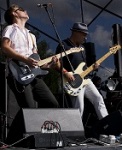 Following successful appearances at Latitude and Dartford festivals over the weekend and with Fuji Rocks coming up a week later, things are pretty hectic for Stone Foundation at the moment in the run-up to the release of “A Life Unlimited” in early August. The album looks set to be their biggest to date and the fanbase seems to be growing by the minute, so it was great to be able to have a quick chat with bass player and co-songwriter Neil Sheasby about the band’s roots and the events of the last year or so.
Following successful appearances at Latitude and Dartford festivals over the weekend and with Fuji Rocks coming up a week later, things are pretty hectic for Stone Foundation at the moment in the run-up to the release of “A Life Unlimited” in early August. The album looks set to be their biggest to date and the fanbase seems to be growing by the minute, so it was great to be able to have a quick chat with bass player and co-songwriter Neil Sheasby about the band’s roots and the events of the last year or so.
Allan – So Neil, tell us a bit about the origins of the band.
Neil – It started around the friendship between me and Neil Jones (Stone Foundation singer and co-writer). He was in a band previously that supported a band I was in and I was immediately impressed with his voice and when the band I was in broke up, the first thing I wanted to do was to get a proper vocalist, so we started writing songs together, fifteen years ago probably. But it took so long because we knew we always wanted it to be a heavy-hitting band with the horns and Hammond and it took a long, long time for us to be able to get the right line-up together. We had the vision and the thoughts and the ideas but it took ages to get that line-up and for it to come to fruition.
Allan – The fact that it’s taken a long time, does that keep you grounded about the whole thing?
Neil – Absolutely, we would be anyway, because first and foremost we’re music fans. Both of us have got big record collections and we create for the buzz of it. We’d be doing it anyway whether people were paying attention or not. So we’ll always be grounded really; it doesn’t matter how much media attention we get or how many people come through the door at gigs and buy records, there’s no reason for us not to stay grounded.
Allan – Over the last couple of years in particular, a lot’s been happening for you and it’s gone crazy over the last six months, so how does that feel after all the time you’ve spent grafting at it?
Neil – It’s heartening and humbling and encouraging for us because you know you’re making a connection: you know you’re not fooling yourself really. We try and do the best we can and we try and make records that we really believe in; fundamentally we’ve got to like them. It’s a cliché that you make music for yourself and if someone else likes it, it’s a bonus, but you do want people to like the records and you do want people to make that connection. Fortunately, the last couple of records, especially “To Find the Spirit” found us a really wide audience and I hope the new record “A Life Unlimited” will broaden it; I think it’s our best work to date. I’d be lying if I said we didn’t care if anyone liked it or not; we do. We want as many people as possible to like it. It’s humbling and encouraging and it means we can carry on. If no-one was interested and no-one bought the records there would be no point in us staying together; this keeps us working, keeps us together and keeps us moving forward.
Allan – I think it’s interesting that your fans are a lot like Dexys fans, for example, they seem to be a very loyal bunch and they really buy in to the whole package.
Neil – Yeah, I think that’s absolutely true. When I was younger I used to follow bands like Dexys and The Jam around; you wouldn’t just go and see one gig, you’d go and follow the tour around, but there’s hardly anyone that does that now and I think we are that sort of band. You never know what you’re going to get from night to night; I think people see that in us and maybe we remind them of things that they’ve grown up with and that’s a good thing; we’re really lucky to have that fanbase that are loyal and just get what we do.
Allan – I think it says a lot about the respect that you have from other musicians that you can pull in such great guest artists on the albums as well.
Neil – Definitely, but that’s not something that we do just for the sake of it. We’ve been fortunate to work with people like Nolan Porter who came over from America and we were his backing band, but while he was over we did some things in collaboration. People like Carleen Anderson and Graham Parker, they don’t do just anything; they have to like what’s in front of them, what they’re hearing, otherwise they wouldn’t do it.
The Carleen Anderson thing “When You’re In My World” was written with that Marvin Gaye duet kind of vibe; that’s how we heard it and we approached Carleen on a whim really. It’s beyond our expectations to be working with people like that, but it’s a massive compliment to what we’re doing that they say yes and get right behind it as well. They believe in what we’re doing as well and they say some very nice complimentary things about our thing and it’s as much of a surprise to us as it is to everyone else; it’s a lovely thing to happen.
Allan – So how did you manage to land Graham Parker?
Neil – Funnily enough, I was at a book launch. I’m really good friends with Paolo Hewitt and I went to the launch of his last book and Graham was there. I just approached him as a fan because I‘m a big fan of Graham Parker and the Rumour and I’ve got all their records. We got chatting and we just hit it off, really. We just started talking, and we never stopped talking so we exchanged emails and numbers. I had a song called “The Night Teller” and it was a bit of a late night phone-in thing like the cover of “The Nightfly” by Donald Fagen, which you mentioned in your review, didn’t you?
Allan – Yeah, I did…
Neil – You got that exactly, nailed on, which really surprised me; it was exactly that, it was a late-night helpline with two people phoning in having a conversation so we needed another voice and I thought Graham’s voice would be absolutely bang-on for it really, so I put the suggestion to him, sent the track and sure enough he went for it. It was one of the bonding things with me and Neil when we started Stone Foundation, we had a few jumping-off points and Graham Parker and the Rumour was certainly one so to have him on our record was fairly incredible really.
Allan – And it sounds great, it really works well for the song.
Neil – As I say, it’s not just for the sake of it. It’s because you can hear it happening.
Allan – One thing that always fascinates me, and I always try to ask songwriters about this, is do you and Neil have a particular creative process, do you always work in the same way?
Neil – No, not really; we collaborated a lot more on this last record. We write separately and sometimes it’s like finishing off each other’s sentences. Neil will have an idea and I’ll think ‘I’ve got this bit that’ll probably work with that’ or I’ll have a song that I haven’t got a bridge for and he’ll have something that just fits hand-in glove, so there’s no real process; we don’t sit down in a room together or anything, there’s various ways it can happen. It can start from a little groove or we can come in with the lyrics first or even the title, as in the case of “Beverley”. We’d had that little hook for a while and we wrote the song around that, so there’s many different ways we work. Also, the band play a part in the arrangements as well. Phil, the drummer, has a great ear for arrangements but there’s no set ways. Sometimes it just happens, when we share the vision and the ideas. It’s sometimes difficult for me and Neil to get the sound out of our head that we want, but the musicians that we’ve got around us now know us well enough to have an understanding and they grasp it really quickly and we get the ideas in our head out and on to the record. We’re very fortunate in that respect.
Allan – The horn section’s sounding really good on this record, although I kind of miss the trombone live, but I guess that’s one of those things about having a big band.
Neil – Well we didn’t want to hide behind the last record, “To Find the Spirit”, so we wanted to make subtle changes. Spencer (Hague, trombone player) played on the last record, but he’s taking a break from the band; he’s having a family and he’s got work commitments. The more the band’s successful, the more the demands of gigging, the more the band’s going through the gears, the more pressure there is on people to give up time to do it because they’re all working guys as well. Spen’s taken a back seat but who knows, never say never, he might be back, but I think it’s nice to have a change with the horns as well and have a different dynamic. We’ve brought in a baritone sax (Adam) and Gareth on trumpet; it’s nice to have a change in dynamic and it’s healthy to keep changing from record to record and I’m sure it’ll change again because it’s inevitable with big line-ups.
Allan – Thanks very much for your time, Neil and good luck in Japan next week.
“A Life Unlimited” is released on August 7.
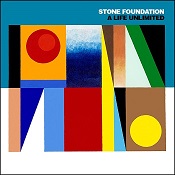 It’s always a good feeling when a band or artist you like starts to get a bit of recognition, particularly when you know they’ve put in the hard hours over a long period of time and they’re doing something that they believe in and they’re committed to body and soul. In 2014, things were finally starting to happen for Stone Foundation. After years of serious graft with no industry backing, playing support slots, organising their own tours and self-funding their releases, people started to take notice and they got a bit of radio exposure (Craig Charles helped a bit there). They did support tours with The Selecter and The Blow Monkeys and the album “To Find the Spirit” made a dent in the independent charts; even The Modfather was photographed holding a copy. So, where to next?
It’s always a good feeling when a band or artist you like starts to get a bit of recognition, particularly when you know they’ve put in the hard hours over a long period of time and they’re doing something that they believe in and they’re committed to body and soul. In 2014, things were finally starting to happen for Stone Foundation. After years of serious graft with no industry backing, playing support slots, organising their own tours and self-funding their releases, people started to take notice and they got a bit of radio exposure (Craig Charles helped a bit there). They did support tours with The Selecter and The Blow Monkeys and the album “To Find the Spirit” made a dent in the independent charts; even The Modfather was photographed holding a copy. So, where to next?
Well, the next album, “A Life Unlimited”, is out on August 7th, so that’s a pretty good place to start. It would have been so easy to stick with the style that made “To Find the Spirit” successful, but that’s not what these guys do; the new album was always going to move in a slightly different direction, particularly after a few of the personnel changes that are almost inevitable in a large group.
The opening song, “Beverley”, (the theme tune from Alexander Thomas’ short film of the same name) is a tantalising hint as to the slight change of direction. It could almost be a track from the previous album, apart from the congas (courtesy of new member Rob Newton), which infuse a little Latin spirit into the funky cocktail of horns, Hammond and wah-wah guitars. There’s a change of emphasis in the brass section as well; Gareth John filled the trumpet vacancy last year and Adam Stevens has come in on baritone sax to replace trombonist Spencer Hague while he takes a break, both joining long-standing tenor saxophonist Gary Rollins. It gives the brass section a more Stax/Atlantic feel with a greater focus on ensemble playing as opposed to solos. It’s a philosophy which applies to the band generally; Stone Foundation is about eight guys working together to create gorgeous grooves and it works because the egos are reined in and the band is more important than the individual.
The sumptuous ballad “Pushing Your Love”, with harmonies from The Four Perfections, wouldn’t have sounded out of place on the previous album, while “Something in the Light” takes a little step forward with the brass section, particularly Adam Stevens’ baritone lines, generating a Memphis Horns feel and the Q Strings adding a touch of velvet to the sting of brass. And that’s all before the Van Morrison-style breakdown with strings, tenor sax and backing vocals from The Four Perfections and Janet and Samantha Harris. Lovely stuff.
“The Turnaround” and “Learning the Hard Way” are real departures for the band. The horn fills have a New York/Cuban feel which weave around Neil Sheasby’s bubbling bass lines and Neil Jones’ guitar to create a sound which is much more New York fusion than small town soul; the kind of thing Southside Johnny and his brass section The New York Horns have been doing so well recently. They’re both irresistibly funky.
It’s the two centre pieces (or the last track on side one and the first on side two if you’re going for the vinyl) which give the clearest indication of the new influences on this album; there’s a bit of jazz in the mix. “Speak Your Piece” is a sprawling epic of a song which starts with handclaps, a piano motif (which is picked up later by the horns) and a five-note bass riff which runs through the song. Even as the song builds and layers are added, there’s always plenty of space in the mix; it never feels crowded as it builds up to a noisy chorus and drops back to piano and bass under the lead before building up again to big horn-driven finale. There’s even a one-note piano solo from Ian Arnold, and if that isn’t jazz, I don’t know what is. “The Night Teller” has a mid-tempo cool jazz feel evoking the cover artwork of Donald Fagen’s classic “The Nightfly” album and features a guest vocal by Graham Parker underpinned by some understated baritone sax. It’s all beautifully played and GP’s vocal works perfectly as a complement to the voice of Neil Jones. “These Life Stories” is a mid-tempo groove built around some laconic brass ensemble playing and delicate electric piano and it’s another example of the ‘less is more’ philosophy; you don’t need flash when a band can play this well together. Even the conga solo is politely restrained.
“A Love Uprising”, the album’s penultimate track, opens up like a 1990 house tune with a simple piano riff and Philip Ford’s four-to-floor kick drum but, within a few bars congas come in to soften the beat before seventies hi-hats and funk guitar, and then brass fills morph the piece into classic New York disco. And who’s that coming in just before two minutes with a rap? It’s Dr Robert from The Blow Monkeys making a guest appearance. Just to add to the Studio 54 ambience, you even get congas and disco whistles; it’s so authentic they knocked back Nile Rodgers when he tried to get in to the session. The closing track “Old Partners, New Dances” is an instrumental piece featuring Ian Arnold on piano and Gareth John on flugel horn, evoking the feel of a jazz club at four in the morning and it’s perfect way to bring the album down for a soft landing after the manic buzz of “A Love Uprising”.
Since the sessions for “A Life Unlimited”, the band has signed record deals in Japan (with P-Vine Records) and the USA (with Spectra Music Group); things definitely aren’t standing still at the moment and, with this album, they probably have the right set of songs to break through. What shines through every aspect of the album is quality; the songs are well-crafted, the arrangements are sensitive and varied and the performances are all superb. Even the artwork by Horace Panter (you are going to buy it on CD or vinyl, aren’t you?) is spot on. Maybe “A Life Unlimited” proves that, in a world where a Glastonbury headliner gets away with out-of-tune karaoke, there’s still room for music created with passion and talent.
“A Life Unlimited” is released on August 7/ 2015.
The first time I saw Nick Lowe play was the first proper gig I saw. It was at Mansfield Civic Theatre in the early 70s when he was singing, playing bass and writing songs for the criminally under-rated band Brinsley Schwarz (who later became the nucleus of Graham Parker and the Rumour). The support bands on the tour were picked up locally and the support for the Mansfield show was a rock covers band named Care with a substantial following from the local Hell’s Angels chapter. Care did their set and went down pretty well; we were all ready for Brinsley Schwarz.
The band hit the stage and, after a couple of songs, it was obvious that something was wrong. The Angels didn’t like melodic pub rock and they were determined to show exactly how much they disliked it. With virtually no security there was a stage invasion which became a battle between Nottinghamshire’s finest bikers and a bunch of Southern musicians and their road crew. The turning point in the battle came when an Angel threw himself at Nick Lowe and found his mouth full of Gibson EB bass machine head; Southern softies 1, northern bikers 0. So my first gig had a stage invasion, a proper fight and an important lesson; it’s not about how big or ugly you are, it’s about how wisely you deploy your resources. I still like to think that his nickname “Basher” came from that night.
Anyway, Brinsley Schwarz dwindled into commercial obscurity and went their various ways. Nick Lowe signed to Stiff Records as a solo artist (the first Stiff EP was Lowe’s “Bowi” 7″, a verbal riposte to David Bowie’s “Low” album ) and also as a hired gun producer for the label’s early artists including The Damned and Elvis Costello. From 1977 to 1980, Nick Lowe was everywhere. He released his own “Jesus of Cool” album, which featured the hit single “I Love the Sound of Breaking Glass” and he formed Rockpile with Dave Edmunds achieving a couple of hits with “Girls Talk” and “I Knew the Bride (When She Used to Rock and Roll)” and had a writing credit on Dr Feelgood’s “Milk and Alcohol”. He toured extensively with Edmunds as Rockpile playing sets which featured their solo hits and collaborations, including the 1979 hit “Cruel to be Kind”.
Following his production credit for the first Graham Parker album, “Howling Wind” (featuring some of his old Brinsley Schwarz bandmates), he produced the third Graham Parker album “Stick To Me” at short notice after problems were discovered with the original master tapes. The final mix suited Parker’s material but some music writers were unimpressed; Greil Marcus complained about the sound, so Nick paid him a visit. He looked at the critic’s state-of-the-art hi-fi and announced that it was fine for listening to Boston and Foreigner but “Stick to Me” was mixed to sound good on a Dansette (readers under the age of 40 might need to Google that one).
From the mid-80s, he gradually faded from the commercial scene while still working with highly influential musicians such as John Hiatt, Ry Cooder and Paul Carrack to produce high quality albums. The commercial decline ended in 1992 when a Curtis Stigers cover of a song written for Brinsley Schwarz in the mid-70s was featured on the soundtrack for “The Bodyguard”. The album sold 44 millions and finally guaranteed Nick Lowe a decent income.
From this point onwards, he was able to develop, and succeed with, the later-life Nick Lowe songwriting and singing style which is much more relaxed, concentrating on lyrics and melody rather than volume and production techniques. The critics started to wake up to the new Nick Lowe sound with the release of “The Impossible Bird” in 1994 and the momentum has continued to build (very slowly) ever since. The release of “The Convincer” in 2001 stepped up the process as more critics got on board, although mainstream commercial rebirth was still a few years away.
The release of the album “The Old Magic” in 2011 cemented Nick Lowe’s reputation as an elder statesman of the British music scene. Backed by the same group of musicians who have featured on recent live and recorded appearances, the album is a perfect statement of Nick Lowe’s singing and songwriting abilities. The songs don’t need a perfect snare sound or a banging bass drum to work well; they just need to be captured in a way that conveys a message to an audience that wants to listen.
Back in the 70s, Nick Lowe had a reputation as the kind of songwriter who could write a song on the bus on the back of a cigarette packet and he’s certainly been very prolific since joining Kippington Lodge in 1967, before it evolved into Brinsley Schwarz. He’s written many, many very good songs and a few great songs in styles ranging from pop through rock to country crooning and he’s still having a good time playing live over 40 years down the line with a critically-acclaimed album to support.
It’s great to see that a hugely talented musician/singer/songwriter/producer can come through the highs and lows of a long career in a business which worships youth more than talent retaining the respect of his peers and real music fans alike. If you use Spotify and you want to have a listen to some of his songs, try these links:
One thing you can say about Robbo is that he doesn’t waste any time. After all, it’s only 33 years since he parted company with Thin Lizzy and he’s just released his first solo album. Okay, he had his own band, Wild Horses, and worked with Frankie Miller and Motorhead, but this is his first solo outing since departing from Lizzy at the height of their fame. The album happened as a result of Robbo’s friend Soren listening to some old demo cassettes and suggesting that Robbo should record them as a solo project.
The songs that made the final cut are a mixed bag; some Robertson originals, some Phil Lynott songs, some Frankie Miller songs and some collaborations with Lynott and Miller. Some have been released before and some haven’t. The only element common to all the songs is Robbo himself and the band (Ian Haughland, Nalley Pahlsson, Leif Sundin and Liny Wood) put together for the album.
The album opens with 2 Robbo compositions, the title track, and “Passion” which wouldn’t sound out of place on an 80s Don Henley album and runs through various permutations of Robertson, Miller and Lynott compositions, finishing on the Frankie Miller classic “Ain’t Got No Money”. The poppiest song ever written by Phil Lynott, “Running Back” from the “Jailbreak” album, appears in 2 versions here, a slow blues version and a mid-tempo rocker which works well apart from the jarring piano solo.
It’s obvious, even on the first listen, that Robbo is still a great guitar player. His growling and howling Les Paul/Marshall sound is as distinctive as ever and his solos still show great technique and melodic invention. Even the vocals are good and the rhythm section and production are excellent. Which tells you that there’s a big “but” on the way.
Although Robbo plays virtually everything except drums on this album, he isn’t a one-man-band. He has a talent which only functions properly with a collaborator strong enough to encourage the greatness and to know when to apply the brakes. Apart from the Celtic soul brothers Frankie Miller and Phil Lynott, and perhaps Jimmy Bain (also Scottish), Robbo hasn’t worked with anyone strong enough to bring out the best of his abilities live or on record. The best material on the album is written either by or with Lynott or Miller apart from, possibly, “Texas Wind”.
Robbo’s musical versatility also works against him at times. He’s known mainly as a melodic rock lead guitar player but he grew up playing with a band (Dream Police) which later formed the core of the Average White Band and also played on a live Graham Parker version of “Hold Back the Night”. Most fans like their heroes to stick to one predictable style and Robbo is just too good for that, which is one of the reasons why he always polarises opinion in the rock fraternity.
“Diamonds and Dirt” is patchy because the songs are written by a variety of people over a relatively long period of time and some songs don’t wear too well. The one constant throughout the album is the great playing which we expect from a rock hero. If you set aside the rock sectarianism and listen to this album with an open mind, it’s actually really good.
Our next contributor plays saxophone with Southside Johnny and The Asbury Jukes but also released a strikingly good album this year as part of the New York Horns which is one of Allan’s albums of the year. When we asked him for a High Fives piece, here’s what he came up with. We think you’ll like this.
5 Horn Sections That Changed My Life
As a saxophone player, one of my absolute favorite ways to make music is with other horn players. Give me a trumpet or two, a couple of other saxophone players and a trombone to add some love, and you’ve got a recipe for a whole lotta fun. If the rhythm section is the meat and potatoes, and the vocalist is dessert, then the horn section is the salt. We bring out all the other flavors and make everything oh so much sweeter.
In thinking about the subject matter for this best-of list, it quickly dawned on me that I had MANY more than five examples that I could draw upon to make my point. So many that I almost gave up! After some careful consideration though, here’s five of the horn sections that have changed my life through their contributions to the music:
THE swingin-est band in the history of jazz. Count Basie’s band emerged in the 1930’s in Kansas City, and became the de facto definition of foot-stomping swing with their penchant for shouting blues, riffing head arrangements, and an infectious groove that just made you want to dance. The jazz traditions of “riffing” and “head arrangements”, while not originating with the Basie band, were certainly developed and forwarded onward by the band. Many of the riffs, licks and phrases that you will hear modern horn sections play can trace some or part of their lineage back to the Basie band. Check out “The Atomic Mr. Basie” (1957) and “Count Basie Swings, Joe Williams Sings” (1956). Two of my all time favorite Basie albums.
James Brown redefined popular music. He also redefined the role of the horn section in popular music. Prior to his influence, horns would generally have a more melodic role – playing melodies and generally being in a “lead” role. The late swing and early jump blues bands often were led by horn players and under the vocals the horns played a large supporting role, remaining a mostly harmonic underpinning. James changed all that. The horn section under James Brown became another rhythmic instrument, driving and propelling the groove. With snapping rhythmic pulses and repeating motifs, the horn section was another texture in the rhythm section, adding propulsion and rhythmic intensity. Check out “Mother Popcorn”, “Super Bad”, “Soul Power” and “Cold Sweat” for classic examples. The JB Horns (Maceo Parker, Fred Wesley, Alfred “Pee Wee” Ellis) also were a fixture of P-Funk and Bootsie’s (Collins) Rubber Band, as the Horny Horns.
Growing up in North Carolina, in the southern United States, it was inevitable that I was exposed to the music coming out of Memphis, Tennessee and especially STAX Records. Wayne Jackson and Andrew Love, aka the Memphis Horns, are one of the most recorded horn sections in history. If you’ve heard “Dock Of The Bay”, “Soul Man”, “Hold On I’m Comin’”, “Suspicious Minds”, “Sweet Caroline”, “Takin’ It To The Streets”, “Let’s Stay Together”, “Born Under A Bad Sign”, “Knock On Wood” (and countless other hits), then you’ve heard the Memphis Horns. They appeared on virtually every STAX recording, backing Otis Redding, Sam & Dave, Eddie Floyd, Carla & Rufus Thomas and an endless list of others. Not only were they a staple of the Memphis scene but could also be found as part of the Muscle Shoals scene, and on recordings with Aretha Franklin and Wilson Pickett.
No modern horn player that plays funk, soul or R&B hasn’t heard of or spent time studying TOP. Bursting onto the scene in Oakland, CA in 1968, Tower saw its peak success from 1973 to 1974. The band continues to tour extensively to this day, playing hundreds of shows every year across the world. The horn section has been featured on countless recordings by artists as diverse as Little Feat, Graham Central Station, The Monkees, Santana, Elton John, John Lee Hooker, Rufus, Rod Stewart, Huey Lewis and the News, and Aerosmith and has come to define a punchy, modern and funky style of writing and performing for horns. Check out “Tower of Power” (1973) and “Back to Oakland” (1974) for the definitive TOP experience.
While not a horn section unto himself, Jerry Hey has probably written more horn arrangements for hit songs and albums than anyone else in the business. As part of the Seawind Horns, Jerry was brought to the attention of Quincy Jones. That relationship led to Jerry’s writing for some of the biggest names in the industry. His credits as an arranger include albums from Michael Jackson, Brothers Johnson, Donna Summer, Rufus, George Benson, Patti Austin, James Ingram, Frank Sinatra, Barbra Streisand, Earth, Wind and Fire , Al Jarreau, Chaka Khan, and the list goes on… Two of my favorite albums that feature Jerry’s writing (and the Jerry Hey Horns) extensively are Al Jarreau’s “Jarreau” and “High Crime” (Check out “Imagination”!) and likely my all time favorite Jerry Hey arrangement (and performance) is from Michael Jackson’s “Workin’ Day And Night” (“Off The Wall”).
I could go on and on… there are so many great horn sections, players and writers out there, making incredible music. Hopefully this list will give you some food for thought and a good place to begin to explore the horn section legacy. Enjoy!


